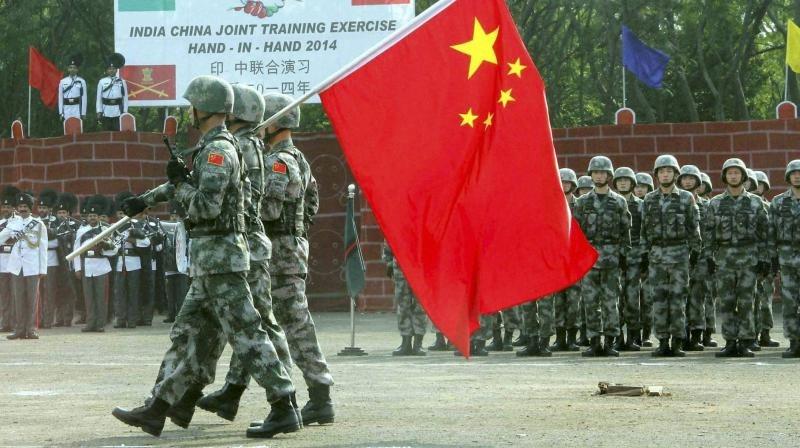Chinese Fake Narratives & Galwan’s Truth

The Galwan Valley skirmish of 2020 between Indian and Chinese forces stands as a significant event in recent geopolitical history. Sparked by territorial disputes along the Line of Actual Control (LAC), it escalated tensions between two nuclear-armed nations and drew international attention.
20 Indian Army soldiers, including the Commanding Officer of the 16th Bihar Regiment and up to 40 Chinese soldiers were killed in the Galwan Valleyclash. This attack by Chinese border troops was unprovoked and happened after they had agreed to a de-escalation plan in the area. The plan, which involved both sides gradually pulling back their troops to pre-decided positions, was agreed upon during high-level military talks.
“China can fake everything”, Chinese officials try to hide actual number of casualties and blame India for conflict,after eight months of silence, China has revealed the identities of four soldiers killed in the Galwan Valley clash, packaging the information with a carefully crafted narrative. Published by the PLA Daily, the story depicts PLA troops as heroic underdogs bravely confronting "foreign troops" despite being outnumbered. This David-and-Goliath tale, supported by interviews and diary excerpts, claims that Indian forces crossed the Line of Actual Control (LAC) and attacked the outnumbered Chinese soldiers.Senior Colonel Ren Guoqiang, Spokesman for the Chinese Ministry of National Defense, stated that Chinese border troops acted heroically to safeguard national sovereignty and peace along the China-India border. He accused Indian troops of illegally crossing the Line of Actual Control (LAC) in June, provoking and attacking Chinese negotiators, leading to the Galwan Valley clash. China exercised restraint post-clash to maintain bilateral relations and criticized India for misrepresenting the conflict. Emphasizing that historical facts and heroes cannot be altered, he urged media to report objectively. He claimed China remains committed to resolving border disputes through dialogue and negotiation to restore peace.
On other side, on the basis of commercial satellite image and evidence from independent Chinese social media researchers suggests that over 40 Chinese soldiers were killed in the Galwan Valley clash in June 2020, according to Anthony Klan, editor of Australian investigative newspaper The Klaxon. Klan noted that a year-long investigation revealed that a confrontation on June 5 led to an agreement to remove infrastructure by the Galwan River. However, on June 15, Chinese troops attempted to dismantle a makeshift bridge used by Indian soldiers, sparking a violent clash. At least 38 Chinese soldiers reportedly fell into the icy river and drowned, while China officially claims only four fatalities.
Klan highlighted that China swiftly censored social media discussions about the casualties, with recorded accounts quickly removed, reinforcing suspicions of a higher death toll. Conversations with locals and first-person accounts indicated the number of Chinese casualties to be significantly more than reported. One Weibo user, purportedly a former soldier in the area, claimed that the Chinese army violated mutual agreements by building infrastructure in the buffer zone and expanding patrolling limits since April 2020. This censorship and the removal of social media posts suggest China's intent to minimize discussion on the true extent of the clash's casualties.
The main factor of China's narrative about India is China's deep-rooted mistrust of India stems from a perceived superiority and derision of India's democratic system and colonial legacies. China's hostility is amplified by India's asylum for the Dalai Lama and its rising strategic ambitions. This negativity is evident in China's opposition to India's UN Security Council seat, Nuclear Suppliers Group membership, and terrorist designations at the UN opposition to India's UN Security Council seat, Nuclear Suppliers Group membership, and terrorist designations at the UN.
Same negative factor reflect in the border issue remains central to China-India tensions. China's claims on Arunachal Pradesh, refusal to recognize Aksai Chin as disputed, and attempts to alter the Line of Actual Control (LAC) highlight its strategic stance. China views India’s infrastructure improvements and assertive patrolling as a 'forward policy,' reminiscent of Nehru's era, increasing face-offs and reflecting India's readiness to use force. This perspective heightens China's insecurity and perception of India's changing tactics, forecasting fiercer confrontations in times to come .
Sindhiya Gupta is a Media Analyst based in Jammu & Kashmir and she can be reached at [email protected]
Updated On 6/14/2024 12:09:56 PM